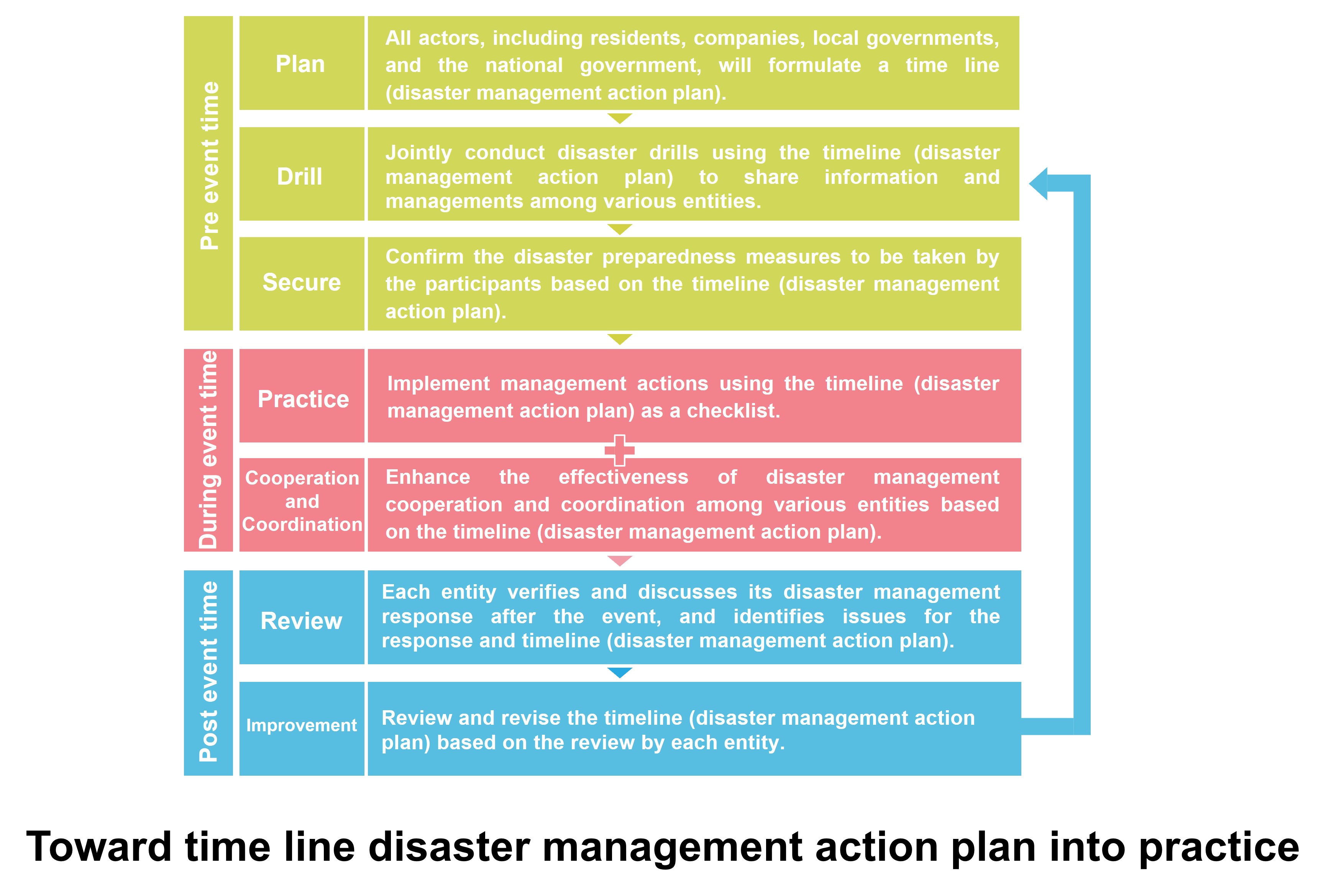
Disaster Management Manual
A manual for practitioners and decision makers!

Disaster Management Manual
A manual for practitioners and decision makers!
Record-breaking heavy rains and windstorms, as well as associated flooding, have occurred in recent years, especially in urban areas. For such risks where the damage can be foreseen to some extent in advance, it is important to develop disaster response actions along a timeline based on the assumption that the damage will occur. In the United States, Hurricane Sandy in 2012 caused a lot of damage in many areas, but New Jersey, New York, and other states responded based on a timeline plan and succeeded in reducing the damage 1, 2.
A timeline disaster response plan is a programmed plan of the countermeasures to be implemented in advance by relevant organizations in a time-line counted down from the outbreak of the disaster to deal with risks for which damage can be foreseen to some extent in advance. The purpose of this plan is to improve disaster response activities by preparing as much as possible before the outbreak of the disaster and reducing the burden of post-disaster response. The outline of the timeline plan is shown in Table 3.2.2.1, and the classification of disasters and the disasters for which the timeline plan will be effective are shown in Table 3.2.2.2. Although natural disasters are listed here, the timeline plan is also effective in dealing with pandemic cases such as influenza.

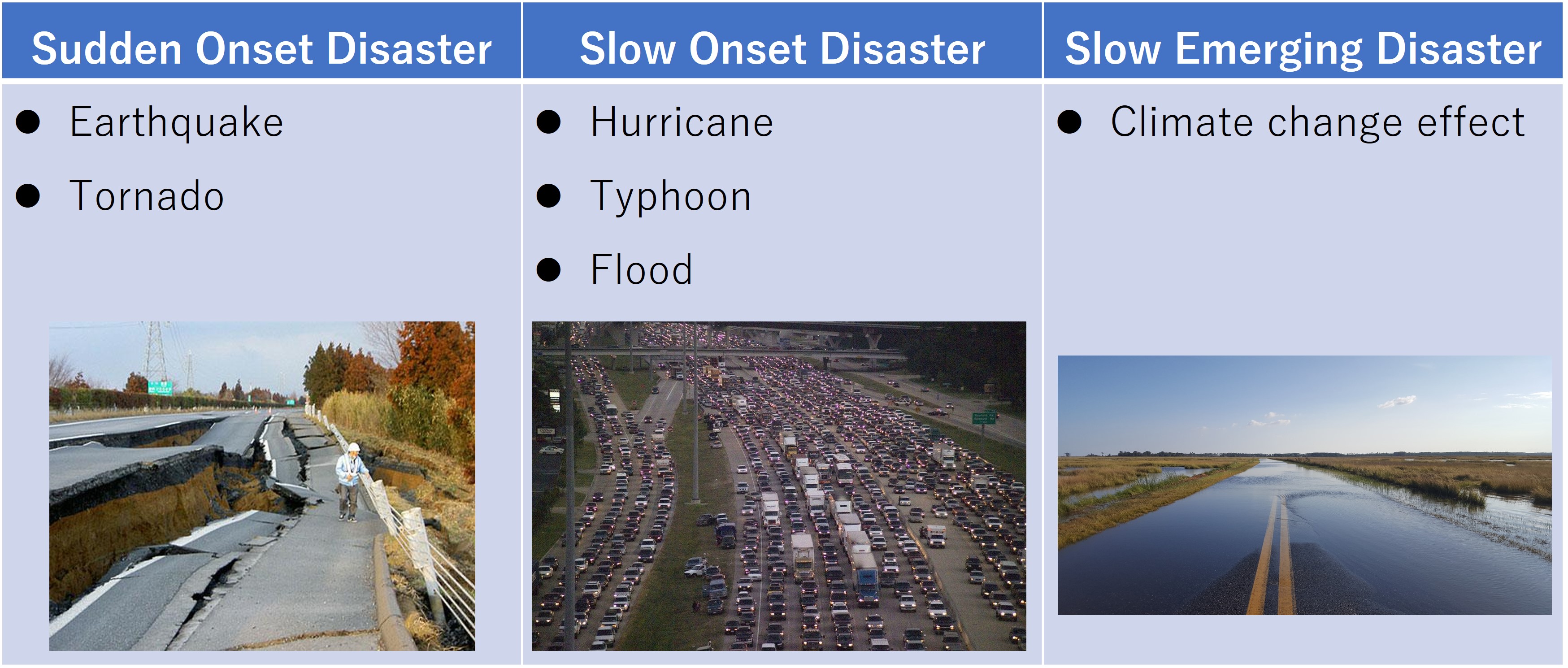
Large-scale water-related disasters such as storm surges and floods caused by large typhoons are disasters that can be predicted to some extent several days in advance. In response to such disasters, it is possible to minimize damage by the cooperation of the relevant organizations with each other, preparation of the response plans in advance based on the assumption that damage will occur, and proper implementation of those plans at the time of the disaster. The response plan should be developed based on the different scenarios: one is to prevent the damage and the other is to minimize the effect of the damage even though the damage will occur. In timeline planning, the time when a disaster outbreak is called "zero hour". The goal of the timeline plan is to complete the evacuation of not only the residents but also the administrative authorities, fire departments, and all other personnel who may be affected by the disaster by zero hour.
The timeline can be an effective method for the risks where the occurrence of damage can be foreseen to some extent in advance. On the other hand, it is difficult to use timelines for the risks such as sudden outbreak earthquakes, where the lead time between the appearance of the risk and the occurrence of damage is extremely short.
When Katrina made landfall in the southern United States in August 2005, it was a disaster of unprecedented scale, submerging most of the city of New Orleans when the levees broke. In particular, many victims were the elderly and the poor who could not evacuate by car, which pointed out the need for appropriate pre-disaster responses such as evacuation preparedness in response to an approaching hurricane. This experience has pointed out the importance of having a disaster preparedness plan in place in advance 3.
In October 2012, Hurricane Sandy made landfall in North America, hitting major cities such as New York as shown in the damage photo of Figure 3.2.2.1. 4 Based on the lessons learned from Hurricane Katrina, the states of New York and New Jersey formulated disaster response programs based on scientific risk assessments in order for "pre-event response plan" and "post-event response plan," assuming that a hurricane of any scale could strike. It has been reported that the early response, including the suspension of subway and bus services and evacuation of residents according to the timeline as shown in Table 3.2.2.3 5, was successful in minimizing damage. There are also reports of active risk communication, in which top government officials call on residents and disaster management agencies to prepare for a disaster even before there is a possibility of a large-scale disaster 6.
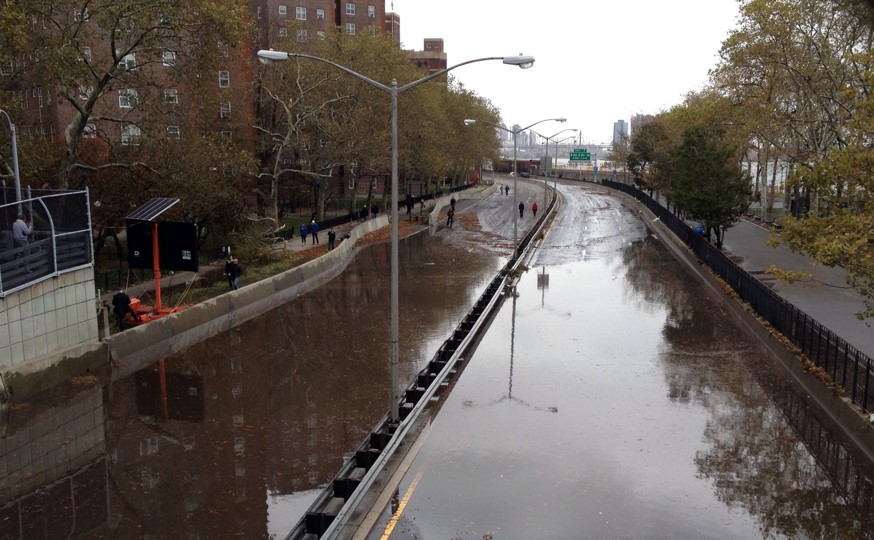
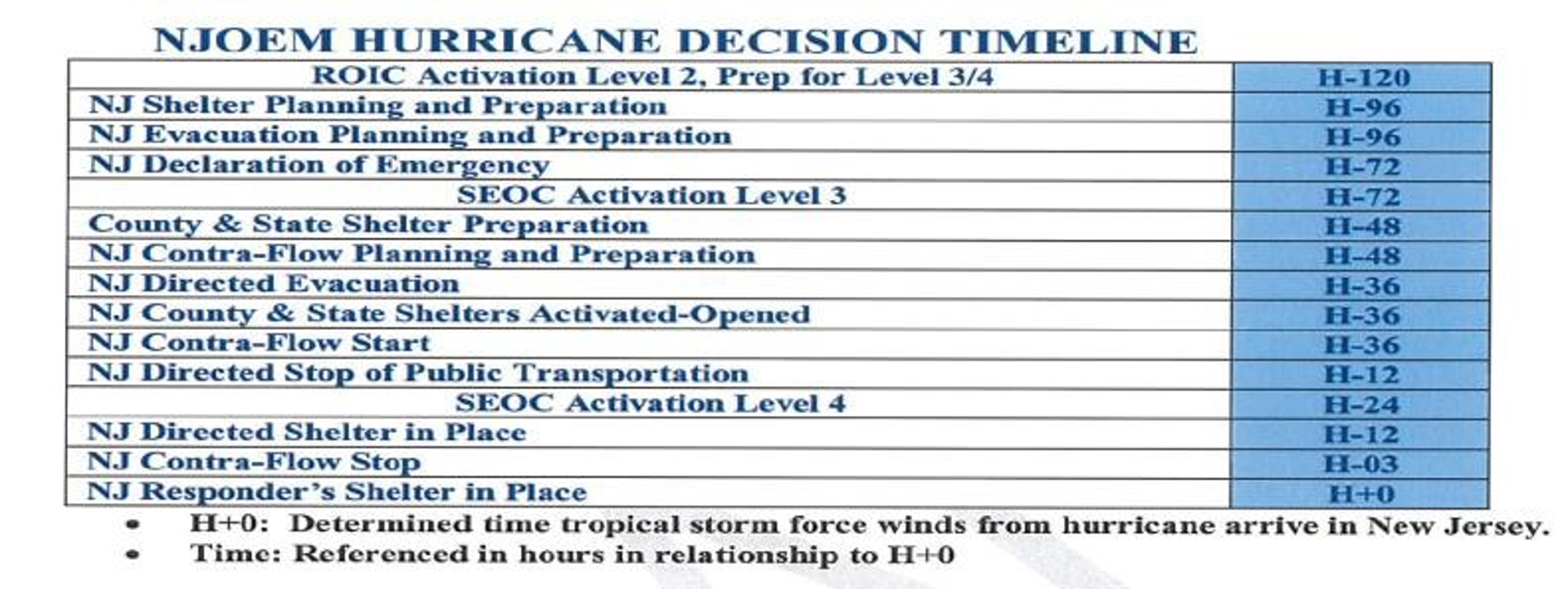
It is strongly recognized that there is no upper limit to disaster assumptions, and it is necessary to enhance preparedness to cope with the worst-case scenario. For this purpose, it is important to set two levels of risk and develop countermeasures as shown in Figure 3.2.2.2 7.
The first is the "prevention level”, which is the risk level at which measures are taken to prevent damage.
The second is the "response level," which is the risk level at which measures should be taken to minimize damage even if it occurs.
In response to these assumptions, the timeline disaster response plan defines the "when," "who," and "what" in strict timeline order in advance. When formulating a timeline disaster response plan, it is necessary to identify the parties involved, to divide the roles among them, and to calculate the timing of the implementation of the assigned roles, in order to plan for, for example, evacuation instructions to residents, road closures, and other disaster avoidance tasks. It is possible to mitigate damage by preparing, agreeing, sharing, and training on what should be done in the event of a disaster from the normal time among related parties. Figure 3.2.2.3 7 shows an example of the timeline for large scale water-related disasters.
In order to respond quickly and accurately, it is important not only to ensure thorough preparation in accordance with the action plan, but also to establish a basis for cooperation among the top management of related organizations, the unification of situational awareness, and problem-solving in the event of an unexpected incident.
This will have the following advantages
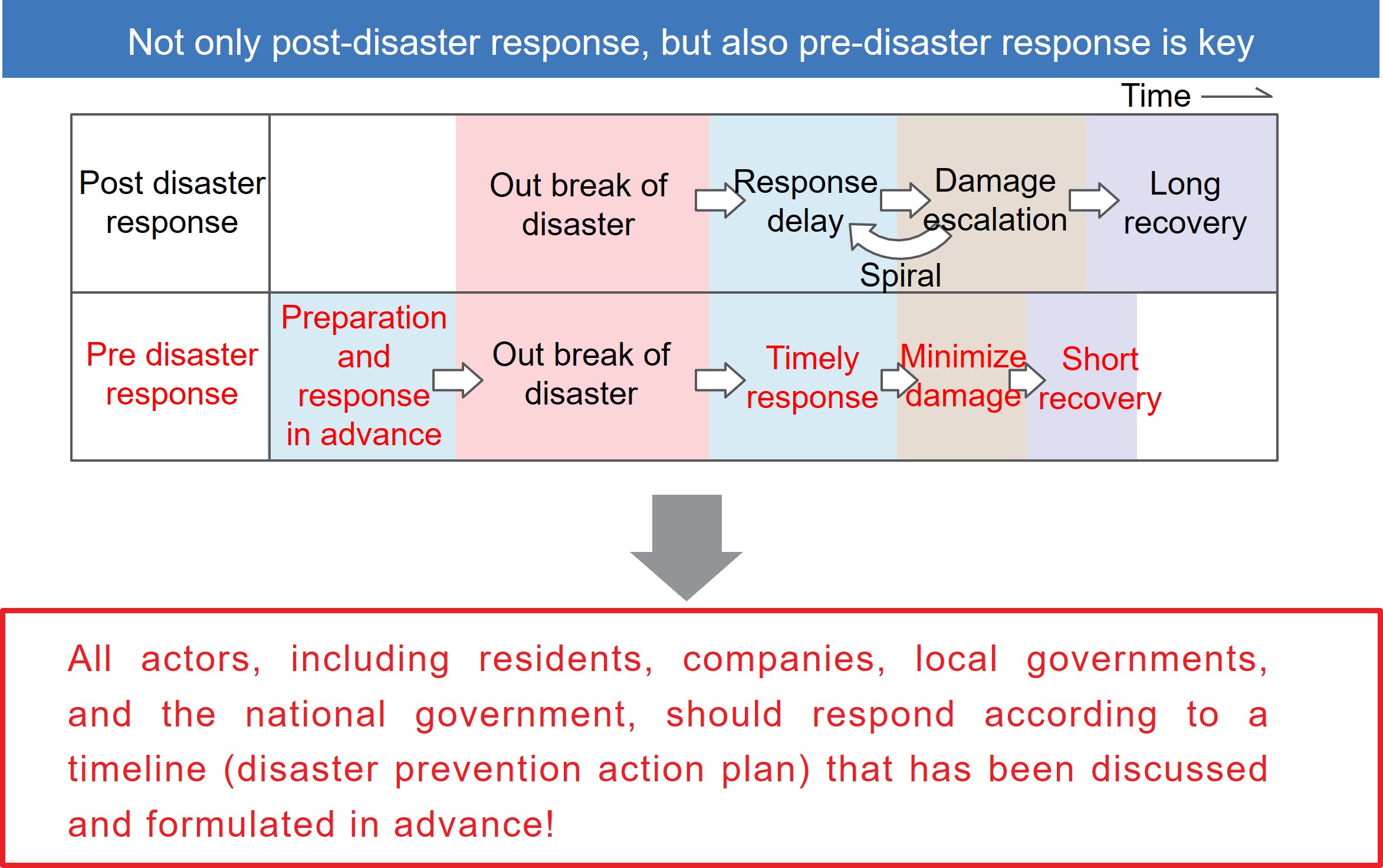
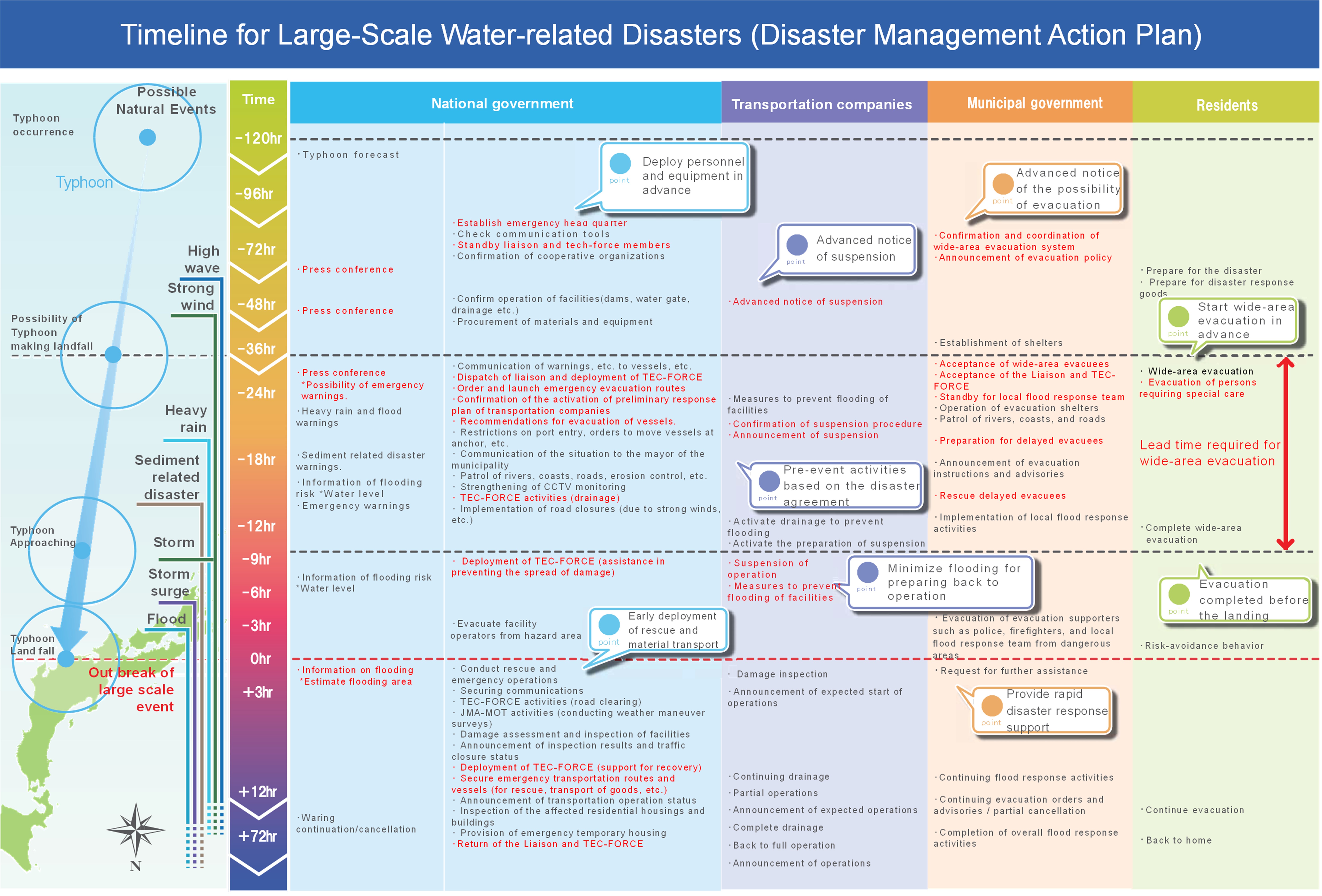
It is useful not only to have a disaster response plan in place but also to verify whether there are any problems with the plan and to constantly improve it. For this purpose, it is essential to review the plans for "when," "who," and "what" by conducting drills based on scenario events. Figure 3.2.2.4 7 shows the concept of continuous cycle for upgrading timeline disaster response plan.
